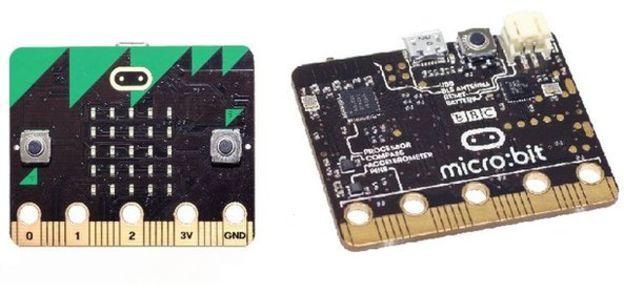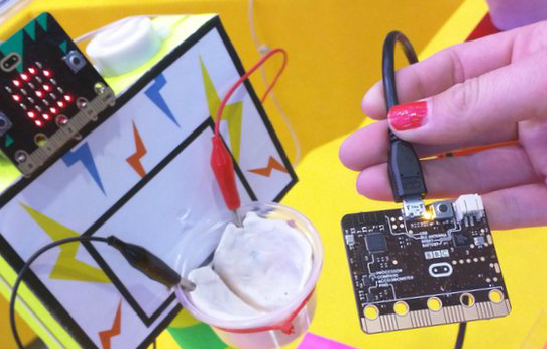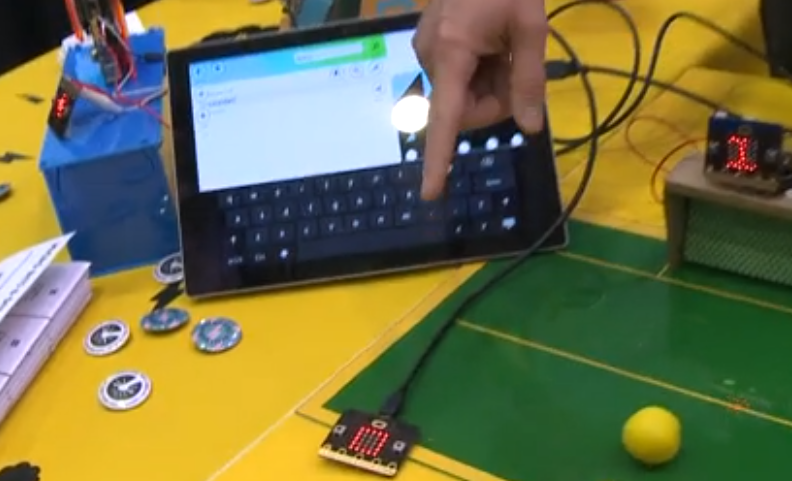While many are quick to jump on the bandwagon against giving children access to technology despite their obvious wishes to grab on to as much of it as possible, that’s certainly somewhat of a contemporary losing battle.
Today, a growing number of educators differ in their knowledge that the way to inspiring children is to find out what interests them–to see what gets them jazzed up and looking forward to class. These days the undeniable truth is that kids are psyched up about being able to explore the digital world. Manipulating computers, the internet, and electronics are often second nature to them–and may be the precursor to offering skillsets for satisfying, lucrative careers upon graduation.
Gone are the days when we went to the library, equipped with only a pencil and lined notepaper, to copy facts out of the encyclopedia for a book report on a favorite animal. With the vast and personal library now known as Google, kids can take a more proactive approach in finding out information about their favorite dog, or about a country they want to visit.
They can download files for 3D printing, or they can learn about robotics; in fact, your kids may have an entire electronics project completed before you even wake up on Sunday morning. And while handheld video games and ongoing texting on the smartphone may be an annoyance to some of the older generation, is it really so different from sitting on the couch playing Atari, hanging out in an arcade, or being glued to the telephone in the bedroom or kitchen?
Some say fight it; some say embrace it. And now, about a million kids in the UK are going to be glad that the BBC is not only choosing to embrace the idea for students in grade 7, they are seeing to it that they all receive their very own Micro Bit computers–small enough to fit into their pockets at 1.6” x 2”.
 This tiny new device, aimed at kids, is meant to offer them the opportunity to explore technology and use it for creative and educational purposes. And before you jump to the notion that they are being handed another screen to stare at slackjawed for hours upon hours, think again. The BBC Micro Bit, bearing a panel of sensors, buttons, and corresponding LED lights, is designed to draw kids into the world of coding, available to them through via their PC or mobile app. This is teaching real computer science.
This tiny new device, aimed at kids, is meant to offer them the opportunity to explore technology and use it for creative and educational purposes. And before you jump to the notion that they are being handed another screen to stare at slackjawed for hours upon hours, think again. The BBC Micro Bit, bearing a panel of sensors, buttons, and corresponding LED lights, is designed to draw kids into the world of coding, available to them through via their PC or mobile app. This is teaching real computer science.
The inner workings of the Micro Bit contain a USB port, Bluetooth antenna, an accelerometer, a compass, and a reset button for accommodating coding. Upon writing simple code, students can test it online before actually applying it to the Micro Bit through USB (which powers it, along with a battery pack), with the whole point being able to manipulate the small device into offering flashing displays, both written and numeric. Kids will be able to tie it into other popular platforms like the Raspberry Pi, as they work with Arduino, Galileo, and take on the creation of complex tasks and programming exercises on their own.
Even more importantly, students can advance forward to learning about 3D printing technology with MyMiniFactory on board as one of the many companies working to advance the momentum of this new initiative in the UK.
“We all know there’s a critical and growing digital skills gap in this country and that’s why it’s so important that we come together and do something about it,” said the BBC’s director general Tony Hall at a launch event in London.
Encouraging students to use their Micro Bits to segue into the world of 3D printing, MyMiniFactory has released a 3D printed case for the device which is available for free download and use in the classroom. The Microbit Open Case program will open a host of opportunities for students through MyMiniFactory as they also announce competitions and programs for students related to 3D printing and open-sourcing.
The available .stl files allow for printing of both sides of the case, which can be assembled. No supports are necessary during 3D printing which should take about 30 minutes. MyMiniFactory created the 3D printed cases and the subsequent available files so that schools could work with students in creating large batches of the small 3D models.
Other suggestions for what kids can actually create with the devices themselves range from metal detectors to videogame controllers. Micro Bits will be given to students up to year seven in grade level, generally meaning ages eleven to twelve, free of charge. A number of other companies–including technological titan Microsoft–are on board with the product, offering financial and technical support–along with ARM, Barclays Bank, Samsung, and Lancaster University, who all plan to promote the small device which while free to the UK kids of the correct grade will also be available for sale later this year.
Other entities involved with promoting Micro Bits are:
- The Wellcome Trust
- ScienceScope
- Coderdojo
- The Code Club
Also of note is that the product will indeed be open design, giving students a glimpse into the innovative community of those who share and improve on technological designs which are often geared toward 3D printing.
“The BBC Micro Bit is all about young people learning to express themselves digitally,” said BBC Learning head Sinead Rocks. “As the Micro Bit is able to connect to everything from mobile phones to plant pots and Raspberry Pi’s, this could be for the internet-of-things what the BBC Micro was to the British gaming industry.”
Because of its compact nature, the Micro Bit allows for easy incorporation into portable projects. This type of innovation is nothing new for the BBC, and actually is an improvement on the BBC Micro which spans as far back as the early 80s, when they embarked on their Computer Literacy campaign–showing now, a great deal of foresight upon the advent of the computer age.
Compared with the Micro from generations past, the Micro Bit allows for processing speeds that are 18 times faster. And just for kicks and giggles, note that compared to the bulky machines from days past, this device for inspiring today’s youth in technology is a stunning 70 times smaller and 617 times lighter.
Subscribe to Our Email Newsletter
Stay up-to-date on all the latest news from the 3D printing industry and receive information and offers from third party vendors.
You May Also Like
Profiling a Construction 3D Printing Pioneer: US Army Corps of Engineers’ Megan Kreiger
The world of construction 3D printing is still so new that the true experts can probably be counted on two hands. Among them is Megan Kreiger, Portfolio Manager of Additive...
US Army Corps of Engineers Taps Lincoln Electric & Eaton for Largest 3D Printed US Civil Works Part
The Soo Locks sit on the US-Canadian border, enabling maritime travel between Lake Superior and Lake Huron, from which ships can reach the rest of the Great Lakes. Crafts carrying...
Construction 3D Printing CEO Reflects on Being Female in Construction
Natalie Wadley, CEO of ChangeMaker3D, could hear the words of her daughter sitting next to her resounding in her head. “Mum, MUM, you’ve won!” Wadley had just won the prestigious...
1Print to Commercialize 3D Printed Coastal Resilience Solutions
1Print, a company that specializes in deploying additive construction (AC) for infrastructure projects, has entered an agreement with the University of Miami (UM) to accelerate commercialization of the SEAHIVE shoreline...

































